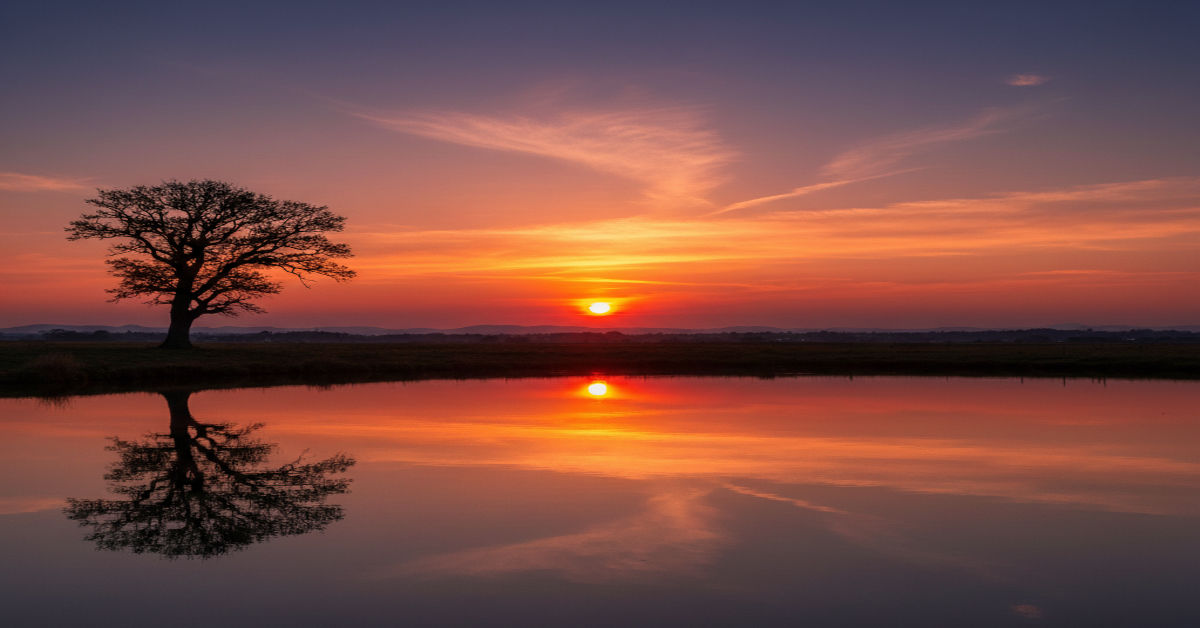Sunset time is more than a number on a weather app. It’s the silent signal that ends the day, shapes our rhythms, and paints the sky with light that has inspired humanity since the dawn of history. From astronomy to art, from city planning to sleep cycles, sunset time affects almost every part of daily life. Understanding it means understanding how Earth, light and time dance together.
This guide will help you go beyond the clock to see what determines sunset time, why it changes, and how you can use it to enrich your life or your work. Whether you’re a photographer chasing the golden hour, a traveler planning evening hikes or a curious learner, this exploration will give you both scientific clarity and poetic perspective.
What Is Sunset Time?
Sunset time marks the instant when the Sun’s upper edge disappears below the horizon. It signals the end of daylight and the start of twilight. Although it looks simple from the ground, it is defined by astronomical precision. Because light bends through the atmosphere, the Sun appears slightly higher than it really is, so the “official” sunset occurs even when the Sun is already below the horizon. This explains why the sky glows long after the Sun vanishes from view.
For most people, sunset represents calm, closure, and beauty, but it also has measurable importance. It governs when artificial lights activate in cities, influences wildlife movement, and helps regulate human sleep patterns. It is both a visual phenomenon and a scientific benchmark. Each sunset is shaped by your exact position on Earth, the tilt of the planet, and the time of year — a daily reminder that the world is always in motion even when the day feels still.
How Sunset Time Is Calculated
2.1 Geometry & Astronomical Concepts
At its heart, calculating sunset time is about geometry. The Earth rotates on its tilted axis while orbiting the Sun, creating changing angles of sunlight that define sunrise and sunset each day. The key factors are latitude (your position north or south of the equator) and the Sun’s declination (its seasonal tilt relative to Earth’s equator). Together they determine when the Sun’s path meets the horizon from your location. When this happens, the hour angle — the Sun’s position in the sky relative to local noon — reaches a specific value that marks sunset.
The equation used to find this hour angle looks simple on paper but hides complex beauty. It reflects how spherical geometry and time are linked. In practice, scientists and engineers use algorithms that account for the Earth’s orbit, tilt, and rotation to generate accurate times. What makes it fascinating is that while the math is universal, each observer’s sunset is unique — no two moments of light are ever identical.
2.2 Equation of Time, Refraction & Corrections
Even when we know the geometry, nature adds more subtle effects. The Equation of Time corrects for the fact that the Earth’s orbit is not a perfect circle. Because of this, solar time drifts slightly from clock time, which can shift sunset by several minutes. Another layer of complexity comes from atmospheric refraction — the bending of light as it enters denser air near the horizon. This bending lets us see the Sun for a few minutes longer than if Earth had no atmosphere.
When these corrections are applied, we get sunset times accurate to within seconds. Professional observatories and meteorological agencies such as the U.S. Naval Observatory (USNO) and NOAA publish these refined data tables. They also include the Sun’s apparent radius since we measure sunset when the top edge, not the center, crosses the horizon. Every adjustment — orbital, optical, or mechanical — helps ensure that what you read on your device matches what you see in the sky.
2.3 Sample Calculation Walkthrough
Let’s walk through a simplified example. Suppose you’re at latitude 40° N on June 21, the summer solstice. The Sun’s declination on this day is about +23.44°. Plugging these into the formula
cosH0=−tan(ϕ)×tan(δ)\cos H_0 = -\tan(\phi) \times \tan(\delta)cosH0=−tan(ϕ)×tan(δ)
we find an hour angle of roughly 116°. Dividing by 15 (since the Earth rotates 15° per hour) gives 7.73 hours. If local solar noon is 12:00, sunset occurs around 7:44 PM solar time. Adjust this for your longitude within your time zone, add or remove any daylight saving offset, and you have your local sunset time.
Although this version omits finer corrections, it shows the logic behind the numbers you see on apps or almanacs. Once you understand how these factors work, you can estimate sunset anywhere with a bit of math or even program your own simple calculator.
Variations & Patterns of Sunset Time
3.1 Seasonal Shifts & Latitude Effects
The rhythm of sunset changes with the seasons. Near the equator, daylight length remains almost constant, so sunset times shift by only about half an hour over the year. As you move toward higher latitudes, the changes become dramatic. In summer, the Sun lingers late in the sky, stretching days into long golden evenings. In winter, it sinks quickly, bringing extended nights. The tilt of Earth’s axis — 23.44° — is what creates this contrast, giving us seasons and the shifting times of dusk.
At polar regions, the story becomes extraordinary. For part of the year, the Sun never sets at all, circling the sky in continuous daylight. For the opposite half, it never rises, leaving months of night. This phenomenon, known as the Midnight Sun and Polar Night, shows how geography directly molds the human experience of time. Each latitude writes its own light diary.
3.2 Time Zones & Daylight Saving Impacts
Clock time and solar time are not the same. Time zones were created for convenience, dividing the world into 24 slices so trains and businesses could follow unified schedules. Yet the Sun doesn’t obey those lines. A city on the western edge of a time zone sees the Sun set later by clock time than one on the eastern edge. When Daylight Saving Time (DST) shifts clocks forward, it makes sunset appear an hour later, even though the Sun’s path hasn’t changed.
These differences influence daily behavior in surprising ways. Studies have found that people living farther west in a time zone sleep less, since the Sun sets later relative to their schedule. Economists also note that retail activity extends when daylight lingers into evening. Our bodies and societies remain tuned to light, even in an age ruled by digital clocks.
3.3 An Analemma Perspective
If you photographed the Sun from the same spot at the same time every day for a year, you’d get a graceful figure-eight pattern in the sky called the analemma. This shape reveals two truths: the Earth’s orbit is slightly elliptical and its axis is tilted. The top and bottom of the figure mark the solstices, while the crossing point near the center represents the equinoxes. This elegant pattern explains why the earliest sunset doesn’t occur exactly on the winter solstice and the latest sunset isn’t exactly on the summer one.
Understanding the analemma adds an artistic dimension to science. It shows that time is not perfectly symmetrical, and the motion of the Sun reflects both rhythm and variation. For observers, it’s a reminder that even something as steady as sunset carries subtle shifts — daily lessons in cosmic balance.
Why Sunset Time Matters: Applications & Implications
4.1 Photography & Filmmaking
For photographers, sunset time is sacred. The last hour of daylight — the golden hour — gives the world a soft, warm light that flatters skin tones and brings depth to landscapes. The Sun’s low angle enhances textures and creates long shadows that define form. Understanding sunset time helps artists plan the perfect moment when color, angle, and light intensity align. Filmmakers use this same window for dramatic scenes, chasing the fleeting magic that no artificial light can truly replicate.
The blue hour, just after sunset, offers a different beauty. The fading sunlight mingles with the deepening sky, creating a cool balance between natural and artificial light. City photographers often capture skylines during this time when the first lights flicker on. Knowing exact sunset times lets creators choreograph these brief transitions with precision.
4.2 Human Health, Sleep & Circadian Rhythms
Our bodies are natural clocks wired to the Sun. The cycle of light and darkness anchors the circadian rhythm, the biological system that regulates sleep, hormone release, and metabolism. When sunset times shift seasonally or when we expose ourselves to artificial light at night, these rhythms can drift. Later sunsets often mean shorter nights of rest, especially for children and working adults.
Researchers have shown that communities in areas with later sunsets experience more sleep deprivation and even higher rates of certain health issues. Aligning daily routines with local sunset times can improve sleep quality and mental well-being. It’s a reminder that while technology lets us ignore night, biology never truly forgets it.
4.3 Consumer Behavior & Economics
Sunset affects not only sleep but also spending habits. Studies from the University of Chicago Booth School of Business found that people become more price-sensitive as evening approaches. The theory suggests that cognitive fatigue builds up through the day, lowering willingness to pay for goods. In places where sunset comes later, people remain active longer, extending shopping and entertainment hours.
For businesses, understanding sunset patterns can shape marketing strategies. Outdoor venues, restaurants, and tourism services often align schedules with local dusk to maximize attendance. Economically, the setting Sun sets off a cascade of decisions — from when street vendors close to how city nightlife begins.
4.4 Biological Rhythms, Ecology & Animal Activity
In nature, sunset is the grand signal for change. Diurnal animals retreat, nocturnal ones awaken, and plants adjust their chemistry to night mode. Birds navigate by the fading light, while flowers close their petals as the sky darkens. Ecologists use sunset time to study species behavior, migration patterns, and seasonal triggers.
These transitions are vital for ecological balance. Disrupting natural sunset cues with artificial lighting can confuse wildlife, drawing insects off course and disorienting birds. Conservation programs increasingly monitor local sunset times when planning lighting for highways and coastal areas to protect sensitive species.
4.5 Urban Planning, Energy Use & Lighting
In cities, sunset marks the start of artificial illumination. Streetlights, traffic systems, and even power grids rely on predicted sunset times to switch modes efficiently. Smart cities now use adaptive systems that dim or brighten lights based on real-time solar data, saving energy while maintaining safety.
Architects and planners also use sunset information when designing buildings or public spaces. Orienting structures to capture natural evening light can reduce electricity use and create more inviting environments. As sustainability becomes essential, understanding sunset time helps balance technology with the planet’s natural rhythm.
How to Find Sunset Time (Tools & Data)
5.1 Online Calculators & APIs
Several trusted tools provide accurate sunset times. TimeandDate.com and NOAA’s Solar Calculator let users enter any city or coordinates to get daily tables. For developers, APIs such as Sunrise-Sunset.org or OpenWeatherMap deliver real-time sunset data for integration into apps and devices. These resources are ideal for travelers, photographers, or businesses scheduling operations around daylight.
Each tool uses global models verified by observatories. They factor in your location’s elevation and adjust for daylight saving rules. Having these tools means you can know precisely when to expect dusk anywhere on Earth — turning astronomy into something you can check as easily as the weather.
5.2 Astronomical Almanacs & Government Data
Before the internet, printed astronomical almanacs served as the main source for sunrise and sunset information. Institutions like the U.S. Naval Observatory and national meteorological services still release annual tables for every major city. These records are valuable for research and official timekeeping since they rely on verified astronomical constants.
For scientific or legal applications, such as aviation or navigation, official data remains the gold standard. Governments maintain these datasets for consistency and reliability. When precision matters — say, for calculating twilight duration or aligning satellite operations — these almanacs provide the foundation.
5.3 Mobile Apps & Widgets
Modern mobile apps have made tracking sunset effortless. Tools like PhotoPills, Sun Surveyor, and Golden Hour visualize the Sun’s path across maps or augmented reality screens. They let users preview where and when the Sun will set, which direction shadows will fall, and how light will change. For outdoor planning or photography, these features turn raw data into creative foresight.
Even standard weather apps now include daily sunset times. Adding a widget to your home screen lets you see day length at a glance. For travelers and nature lovers, these apps bridge science and lifestyle in one tap.
5.4 Building Your Own Simple Calculator
If you enjoy coding, you can build a simple sunset calculator. Using basic trigonometric formulas and data from NOAA, it’s possible to estimate sunset within a minute of official values. By combining latitude, longitude, and date, your program can generate accurate daily results. Developers often include this feature in smart lighting systems, drone flight planners, and energy apps.
Creating your own calculator deepens your understanding of celestial mechanics. It shows how Earth’s motion and sunlight geometry translate into a single meaningful number — a small triumph of math reflecting the vastness of nature.
Case Study: Sunset Time & Price Sensitivity
A 2024 study by researchers at the University of Chicago Booth School revealed a curious link between sunset time and consumer behavior. Using data from thousands of households, they found that as sunset occurs later, people become more price-sensitive. Each hour of additional daylight before sunset increased sensitivity by roughly five percent. The likely reason is that mental energy fades through the day, making shoppers more cautious as night approaches.
This insight has practical implications. Retailers in regions with earlier sunsets might schedule promotions earlier, while entertainment venues in western parts of a time zone could benefit from later operating hours. Sunset time doesn’t just color the sky — it colors how we think and spend.
Conclusion & What to Do Next
Sunset time is a daily masterpiece painted by the Earth’s tilt, orbit, and atmosphere. It defines the rhythm of life, guiding behavior, health, art, and technology. Understanding it means connecting to both science and serenity — a reminder that every day ends in light before darkness.
To make the most of this knowledge, check your local sunset times, plan your outdoor moments, and appreciate the silent precision behind each evening glow. Whether you watch for beauty or for data, the setting Sun always tells the same truth: time moves, and every ending carries its own light.
Common Questions (FAQ)
Q1: Why does sunset time change through the year?
Because Earth’s tilt and orbit cause the Sun’s path across the sky to rise and fall, altering when it meets the horizon.
Q2: Can pollution or clouds change sunset time?
Not significantly. They affect how sunset looks, not when it happens.
Q3: Why do some places have no sunset for months?
At high latitudes, the Sun can remain above or below the horizon for extended periods due to Earth’s tilt — creating the Midnight Sun or Polar Night.
Q4: What’s the difference between sunset and twilight?
Sunset marks the disappearance of the Sun, while twilight is the fading light that follows, divided into civil, nautical, and astronomical phases.
Q5: How accurate are sunset calculators?
Most modern calculators are accurate within 30 seconds, thanks to high-precision astronomical models.







